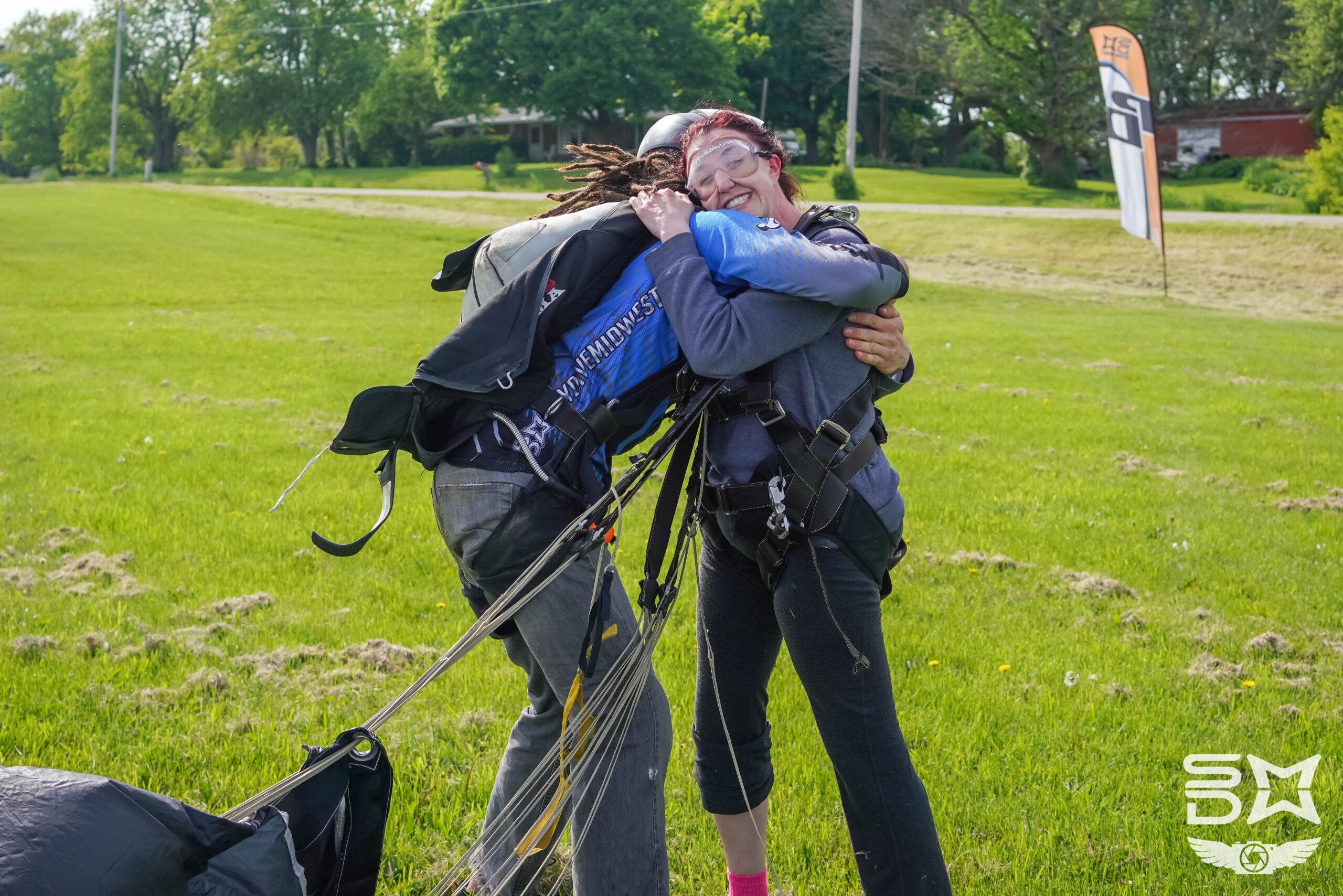Should I tip my instructor?
There are no hard and fast rules when it comes to tipping in the skydiving industry. So, navigating who to pay and how much can be tricky. We have a few insights on the workload and expectations of the experience which might help you to decide how much gratuity to offer.
The old saying that “tipping is not required but always appreciated” is as true in skydiving as it is in any other service-based industry. And yes, that guy who just helped you get from 14,000ft and back safely on the ground with the use of both of your legs, technically “saved” your life. If you want to tip just for getting down safely and nothing else, $5-$10 would be appropriate. Survival at a minimum is great, but you should also expect great SERVICE.
- Was your instructor kind and friendly?
- Were they professional, informative and knowledgeable?
- Did they remember your name?
- Did they make you feel safe? Did they encourage and support you if you were scared?
- Did they joke around with you to lighten the mood with humor?
- Did they engage you in the skydive?
- Let you steer the parachute?
- Answer all of your questions?
- Did they tell you how you can become licensed?
- Did they tell you that you can get a 2nd jump for just $159?
- Did they make your skydive memorable?
- Did they smile in your video/photos? Did they engage with the videographer?
- Did they seem like they loved their job and sharing that passion with you?
If your instructor goes above and beyond to make your experience as fun and enjoyable as it can be, maybe consider a bigger tip. We’ve seen a range of tips, anywhere from $10 all the way to $100. However, the average is about $20 for great service. It’s not all that much when you think about it. If your jump cost $200, that’s not even a 10% tip. Most other service-based industries receive 10-20% based on the quality of the service.
Tipping in skydiving shows an appreciation for the skill required to get you safely to the ground. Instructors train for a minimum of 3 years and perform a minimum of 500 jumps in order to participate in a course to try to earn an Instructor Rating. In jumps alone, a potential instructor can spend close to $15,000 to meet the requirements. This doesn’t include course fees, USPA Membership, course jumps or equipment.
Instructors must also invest in purchasing or leasing expensive, life-saving equipment. Tandem equipment systems cost thousands of dollars. Parachute systems must be repacked and inspected every 180 days which costs about $70 per inspection. Additionally, instructors need a helmet and altimeter, each costing a few hundred dollars.
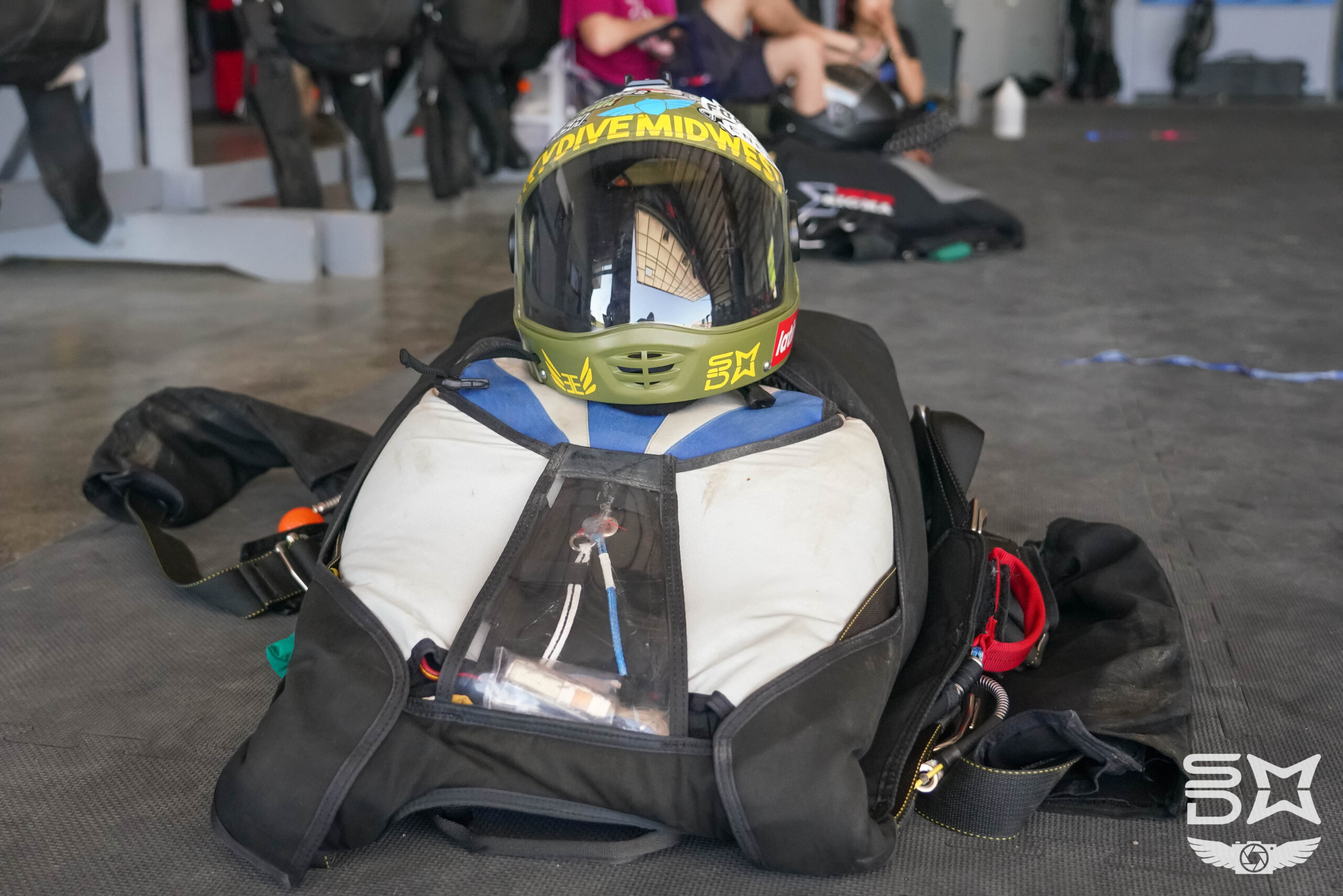
The job not only requires skill, but a lot of energy as well. The equipment weighs about 50lbs and an instructor carries that weight around most of the day. That’s in addition to the weight of their passenger, which they must manage to move from one end of the airplane to the other. They work in unairconditioned spaces all day, often in the hot sun. They show up every day, rain or shine, just for the opportunity to take you on a skydive. If they don’t jump, they don’t get paid. This means on bad weather days, instructors show up to work, spend an entire day at the drop zone and get paid NOTHING. This sacrifice of time is representative of the commitment these individuals have to their jobs. Instructors work 8-14 hour days during the summer. They can do as many as 20 jumps in a single day. This requires both stamina and strength. If they can complete an extremely physically challenging day and still be fun and engaging with each customer, that’s no small feat.
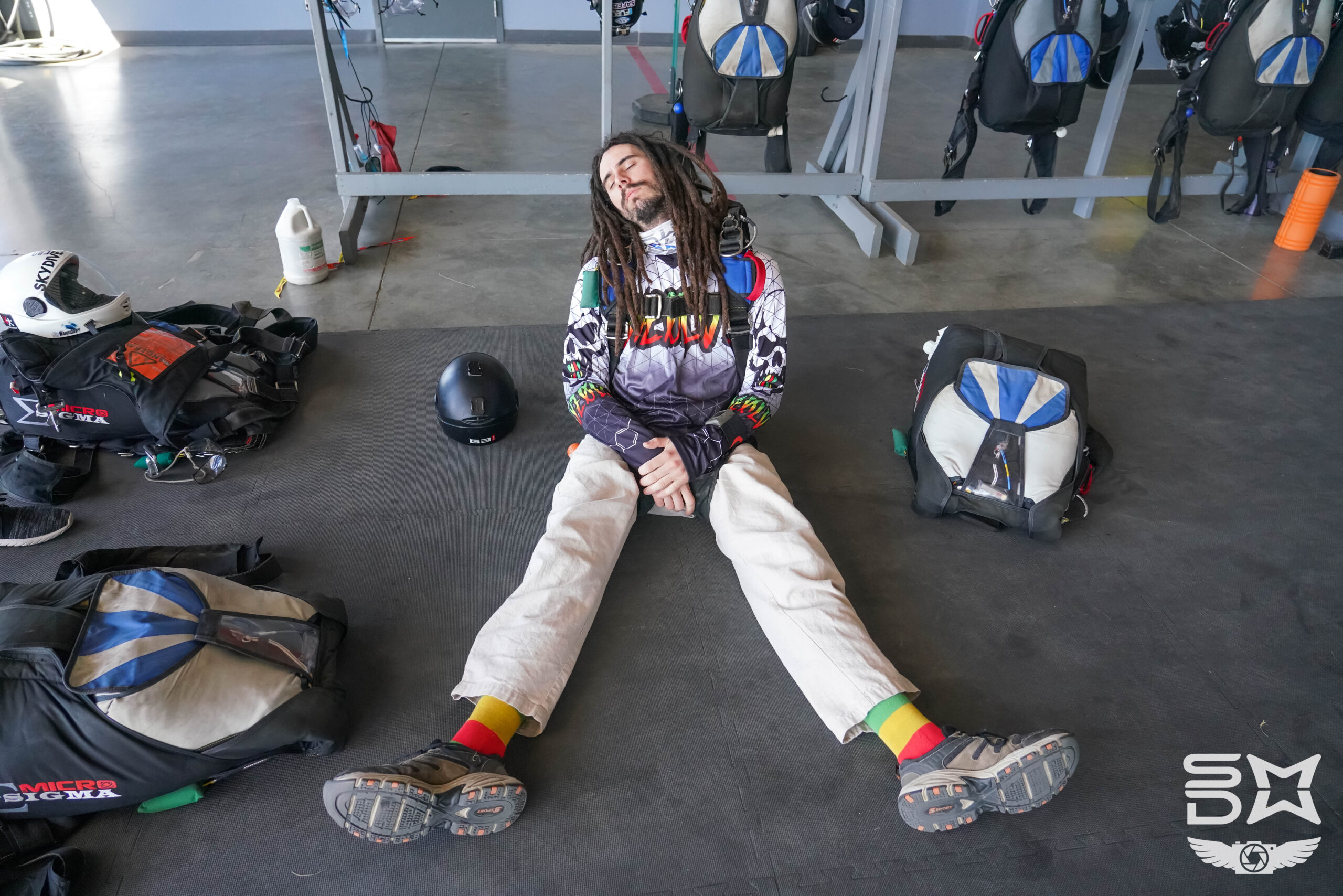
Life as a skydiving instructor can also be rather dirty in some respects. Forced to attach themselves to strangers every day, they are in very close quarters will all kinds of sweat, smells and germs. In freefall, they are upwind of saliva, runny noses and an occasional upchuck. In a post-covid world, this makes skydiving high-risk for an instructor’s health.
Because the job requires such physicality, it’s important that instructors remain healthy, fit and uninjured. Most instructors are independent contractors and they operate without workers compensation, sick or vacation days. It is truly a labor of love.
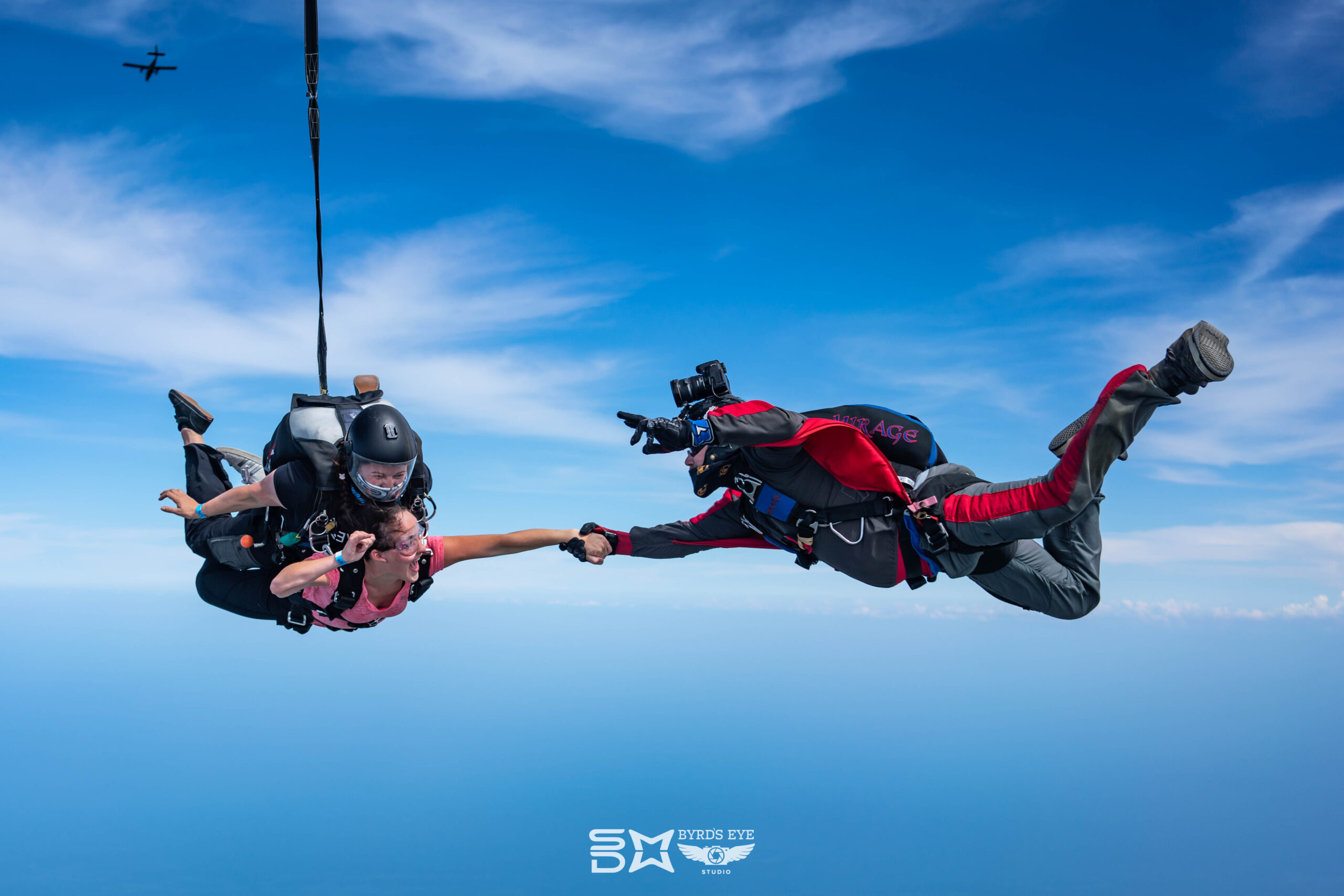
Often customers ask if they should tip their videographer. Again tipping in skydiving is never expected but always appreciated. In all honesty, most instructors will often split their tips with the videographer. Sometimes they will even split with the people packing their parachutes or working in the office. So, if you really liked your instructor and want him to keep the $20 tip you gave him, you may want to consider tipping your videographer as well. $5-10 for good service. $15-20 if the service was above and beyond.
It does take a great deal of training to become skilled enough to capture your exciting moments in freefall. 200 jumps are required at minimum to start wearing camera equipment on a skydive. Many more practice jumps are required in order to become skilled enough to produce a quality result consistently. Just getting the timing in sync with your exit is extremely challenging, and we REALLY want to get that exit shot, just as your feet leave the aircraft. Freefall speeds can vary dramatically from jump to jump based on the size and body type of each tandem student. The videographer must be skilled at making quick and precise speed adjustments in freefall to stay with you. Videographers will often invest in special jumpsuits with “wings” or a “camera jacket” to help them fall slower for smaller tandem passengers. These custom suits can cost many hundreds of dollars.
Camera equipment can be expensive too. They must purchase both video and still photography cameras that shoot at a very high resolution and quality. Additionally, the equipment is being exposed to some pretty harsh conditions- 120mph winds, sometimes rain or moisture, and lots of direct sunlight. This means maintenance and repairs can be frequent and expensive. Additionally, some specialized helmets are needed. The helmet must be customized with mounts for the camera equipment and a tongue or bite switch which must be depressed in order to take a photograph, hands-free. They are also equipped with a ‘cutaway’ system in the event their parachute becomes tangled in their camera equipment on deployment. If this happens, the videographer must buy all new cameras and a new helmet which costs thousands of dollars.
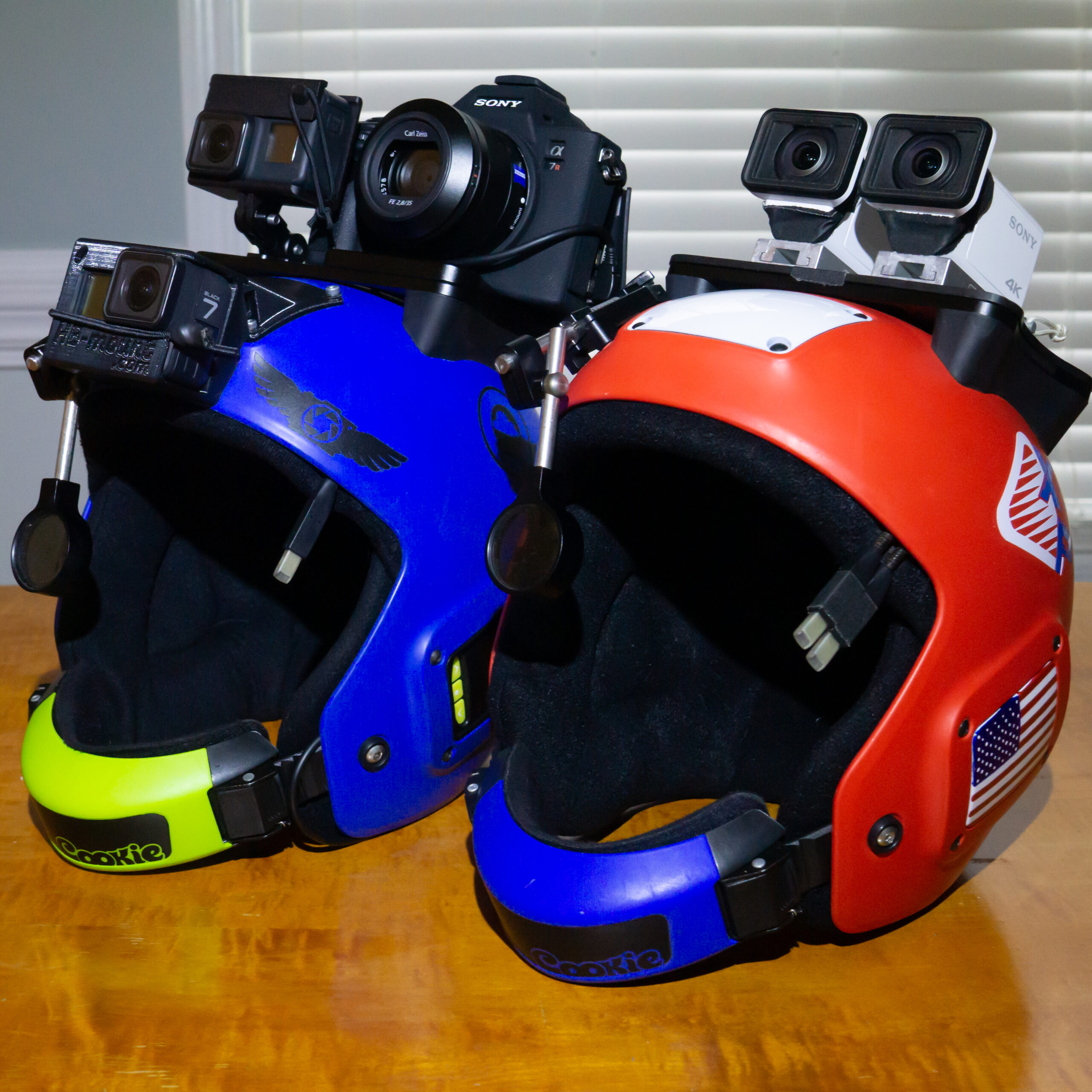
They are also responsible for purchasing and maintaining their own parachute system or “rig”. Sometimes a videographer will invest in 2 rigs so they can complete more jumps in a day without having to stop jumping while 1 rig is being repacked. These investments are many thousands of dollars and $70 every 180 days for regular maintenance. Parachutes must be re-lined every 500 jumps and replaced every 2000 jumps.

There is also a physical toll to be considered. Videographers work the same hours and conditions as instructors. They carry 25lbs of weight on their backs and up to 8lbs on their heads. The extra weight and strain on a videographer’s neck can often cause pain and injury when combined with the opening shock of the parachute. A videographer who sustains this kind of injury has no means to make money until they are well again.
In addition to a tip, the next best thing you can do is give them some love in the form of a review on any platform: Google, Yelp, Trip Advisor, Facebook, etc. Hearing what a great time you had is a point of pride. There’s something special about giving someone a memorable, FIRST EVER experience. It’s rewarding for instructors to hear your thoughts and praise. Sometimes, we even give your instructor a free fun jump if you mention them by name in your review.
At the end of the day, instructors and videographers invest a lot of time, money and energy in their craft. While it’s true the job is very fun, it’s also a lot of work and requires a great deal of skill and practice. If at the end of an exhausting day they can still provide an experience that’s above and beyond, we think that deserves a little recognition. Exactly how much is up to you and depends entirely on how much you loved your experience. Even if it’s just kind words in a review, your instructor will always appreciate you for it.
